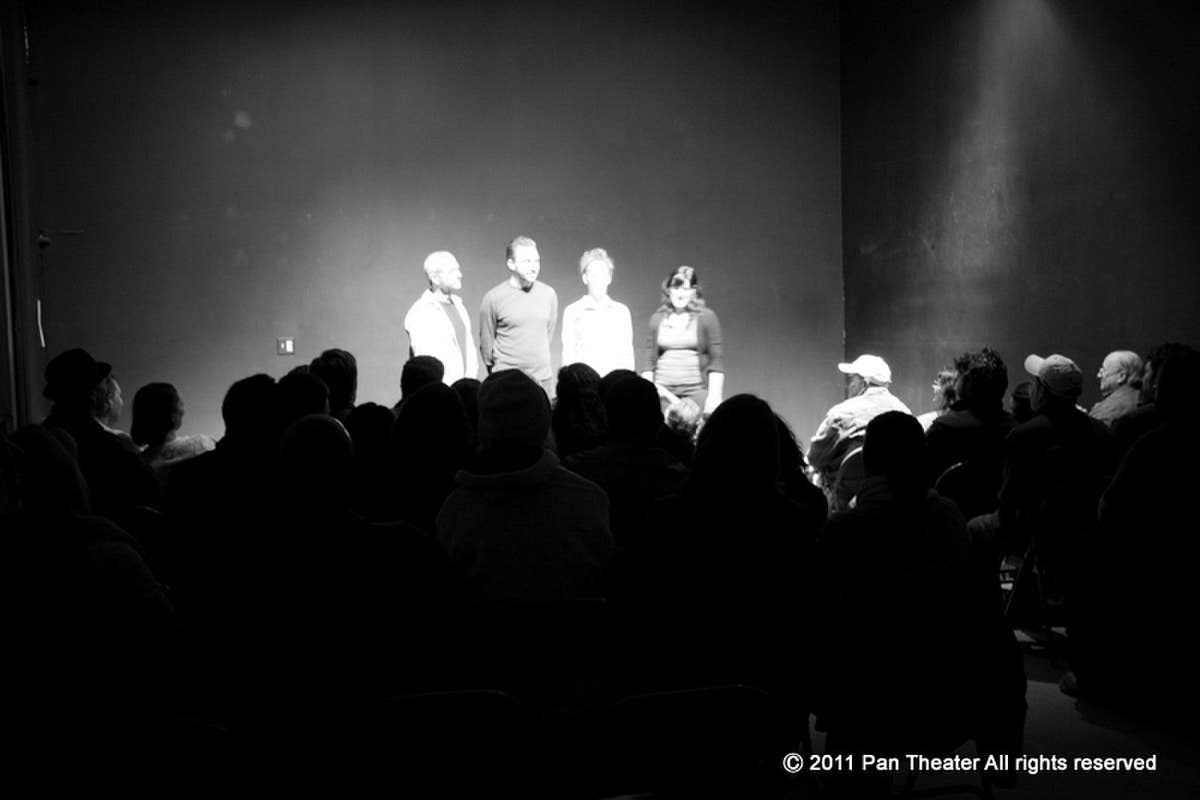An Improv Scene Simplified
Scenes don’t have to be complicated. There is a creative process that allows scenes to flow.

(Awkward Face Performers - Pan Theater 2011)
Lights up:
The actors connect to each other, the space and the audience.
Actor one - has need
Takes action
Actor two - listens, reacts
Takes action in response (yes, and)
Actor one listens, reacts and responds
and so on, and so on, and so on....
A highpoint is reached (or a lowpoint), something is forever changed, realized or something hidden revealed both characters are changed.
The change state is experienced. The scene is over.
Needs of scene:
who, what, where
Where- in time, emotion, and space.
That is the setting and location. Also the feeling.
Who - who are the characters to each other but more importantly, how do they relate to each other.
What - surface what
the what, what.....what is the scene really about
Closing moments: high moment, question asked or answered, complete, funny moment, or the perfect line.
The close can either be a slow fade, a scene transition to a next scene, or a fast edit...
Note:
Listening is often the hardest thing. Change doesn't come easy.